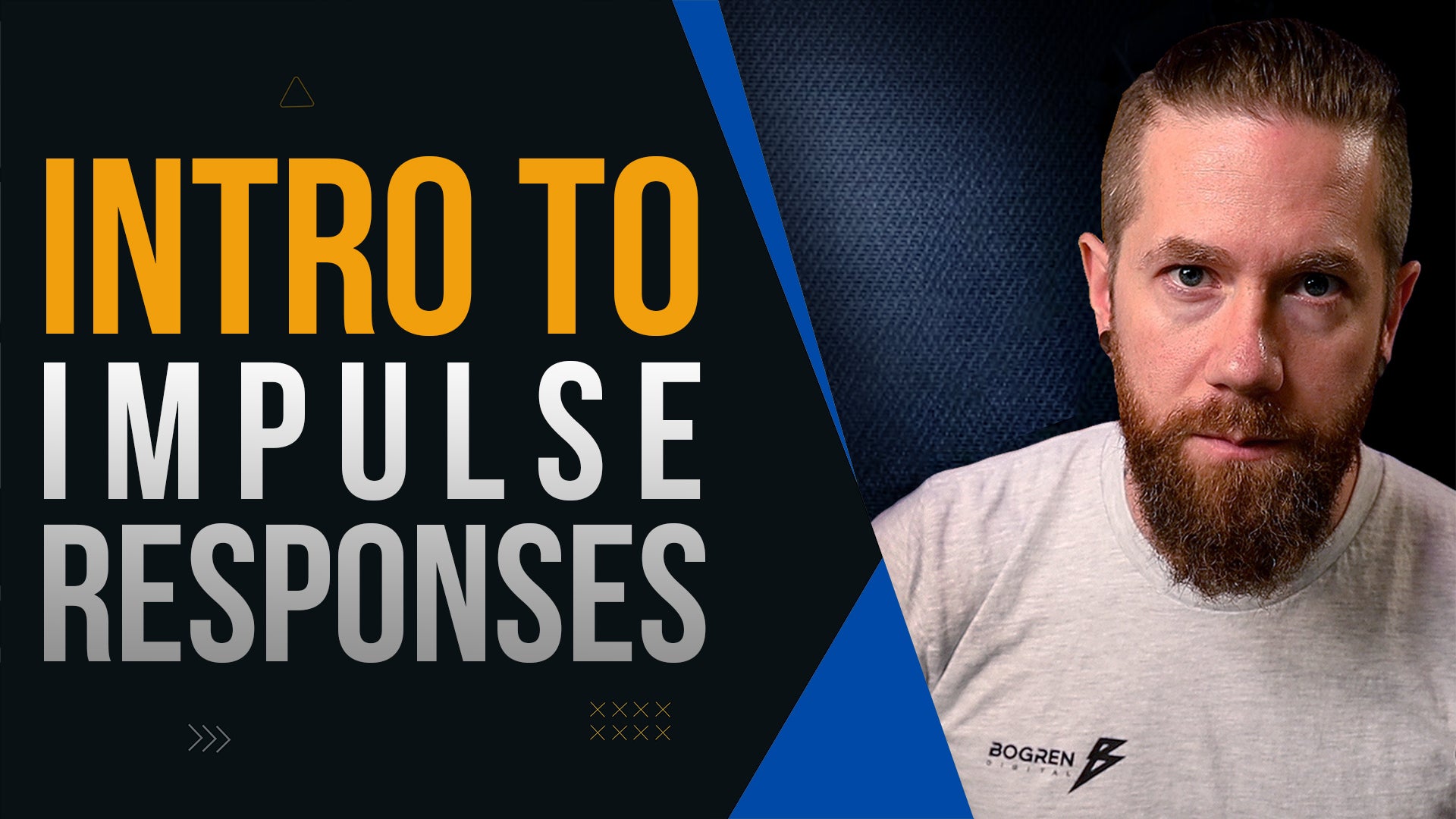Video: Intro To Impulse Responses

Hello there! Jeremy here.
Today, we are going to go over what impulse responses are as well as how to install and use them.
The easiest way to think about what a guitar impulse response is, is to think of it as an extremely accurate snapshot of a speaker cabinet, microphone, and anything else in the recording chain, like a preamp or an EQ.
All of these things, including the room it was captured in, are a part of the capture and then stored in a very short WAV file. This file, AKA the IR, can then be loaded into software to recreate that exact tone characteristic. Just imagine having the ability to recall at home the same tone a top producer meticulously dialed in in their studio!
Now, as great as impulse responses are, it's important to also point out their limitations. An IR is a snapshot in time, much like a photograph. It only captures the tone at one point in time. If that sounds a bit confusing, the important part is that while IRs are an incredibly detailed capture of a recording chain, the subtle dynamics that you would hear in the actual environment cannot be reproduced in an IR.
The other limitation is that IRs don't respond to EQ as well as an actual cabinet. You can push things a lot further in the analog world and still make it sound natural. This is one of the reasons behind our philosophy when it comes to impulse responses. We sculpt the tone in the analog domain before the IR gets captured for the best possible tone.
All right, now that we've covered what impulse responses are, let's briefly go over how you install and use them. The good news is, there is no real install process. These are just WAV files.
It is recommended that you put all of your impulse responses under one location on your computer, so you know where they all are when it comes time to load them up in an impulse response loader.
We hope you've found this information helpful. Now go make cool music and take care!
|
Jens Bogren Rhythm IR Pack |

